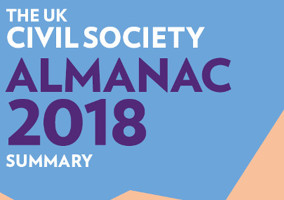One curious fact to spring from the launch of the NCVO almanac last month was the fact that there are almost 13,000 charities in the UK which exist primarily to give grants.
This is 8 per cent of the total charity register, and it seems like an unnecessarily large number. To a completely untutored eye, it looks like a field ripe for merger.
Also, few people seem to know who these charities are, so it seemed to be worth a bit more research.
I got in touch with the UK’s best (maybe only) charity freelance data scientist, David Kane, who furnished me with two list of these small grant-givers.
There are roughly 4,000 organisations with incomes of £10-20,000 a year, spending £84m, and another 5,4000 under £100,000, spending £300m.
In one way these charities are small beer. All of them together spend less than the Wellcome Trust. Most grant-giving in the UK is done by less than 300 charities, and cumulatively these bodies make up only a single-figure percentage or so of the UK’s total grant-giving. But together they are still significant. Their assets total several billion pounds.
In a completely unscientific way, I’ve worked through the list to work out who they are.
There are a lot of PTAs
Around half of the list is parent-teacher associations, who are giving grants to their school and its pupils. Most of these are clustered at the smaller end of the spectrum.
This isn’t even all the PTAs. Parentkind, their umbrella, claims almost 14,000 members.
This prompts a question or two, because this is a systemic issue with education, diversity and equality. In theory all schools get similar budgets for each pupil, but in practice schools in rich areas raise a lot of charitable money and are therefore better equipped.
The same arguments that apply to independent schools also obtain here. You cannot blame parents for seeking the best opportunities for their kids, and nor can you argue that better-educated children is bad for this country, but you can certainly question whether rich people should get tax relief for giving their kids a leg up.
Who else?
Similarly, there are a lot of religious charities. There aren’t so many of these, presumably because churches themselves are charitable and can give grants on their own. But they aren’t trivial in number, either.
There’s also a very significant number of Rotary Clubs and similar organisations. Rotary is a declining organisation, as people gradually lose their formal affiliation with clubs and societies, but it’s still got a lot of oomph left in it. It’s to be hoped the Rotarians can turn it around.
The charities remaining seem to mostly fall into two categories – national grant-givers doing something weirdly specific, like giving grants to help disadvantaged people go sailing, and local givers who seem mostly to administer small legacies.
What does this tell us?
As usual, when you look at a part of the charity sector in detail, the case for merger is much less compelling than it first seems. But I think you could still make the case that a lot of these smaller pots of cash could be brought together – as well as a whole other tranche of charities under £10,000.
If we combined all the little bequests, many of them administered by local councils and solicitors’ offices up and down the country, we would end up with a significant sum of money.
One possible repository is community foundations. I’m a big fan of local grant-giving, at scale, independent of local authorities, and this might be a good place for small endowments to go.
The decision of OSCR, the Scottish charity regulator, to capture all the little bequests to alleviate the poverty of the indigent gentlewomen of Aberdeen, or whatever, led to a lot of them shutting down and the money doing something more useful.
Why merge grant-givers?
There are unique advantages to merger in grant-givers, which don’t always apply to operational charities.
First, investment assets make more money if they’re combined, and can be administered at lower fees. Rich organisations get richer faster. So an amalgamated pot of cash can allow us to give away more charitable money, and probably also administer that endowment more ethically, because bigger pots of money can ask more of their investment managers.
Second, larger grant-givers have lower fixed costs, and often have more streamlined application processes. More applicants are aware of them, and dealing with a few larger funders is much easier than navigating the maze of requirements with many small ones.
Why isn’t it happening?
One reason grant-givers tend not to merge is because of the way they were established, and this throws up some fundamental questions about the nature of charitable giving, which I don’t know the answer to.
Chiefly, I’m interested in the question of how long the dead hand of the donor should hold sway over the living. We frequently hear from foundations that they still pay close attention to the wishes of their founder and I have to wonder why, because often those wishes don’t seem very sensible, or very relevant to today’s society. And it seems odd that the will of one dead individual should outweigh the needs of many living ones.
It does of course reassure the next generation of philanthropists that the law will protect their wishes, and that they, too, can direct the behaviour of society from beyond the grave.
I don’t think most philanthropists are trying to aggrandise themselves or are necessarily doing this deliberately, but philanthropists are often quite prescriptive in their wishes making it difficult for those who inherit the foundation to abide by them as society changes.
This is a universal problem. People don’t have to give their money away, and it seems churlish to point out that they are giving it away poorly, rather than thanking them for doing it at all.
So I suspect that whether we need 13,000 grant-givers or not, we’re likely to remain with them for quite some time.
|
Related articles











